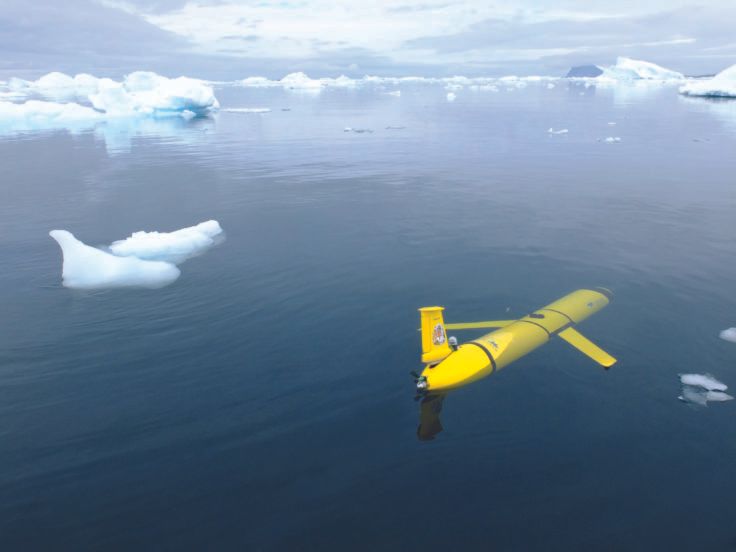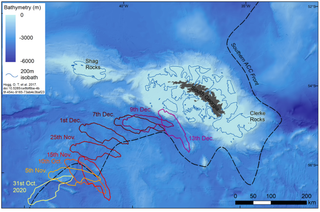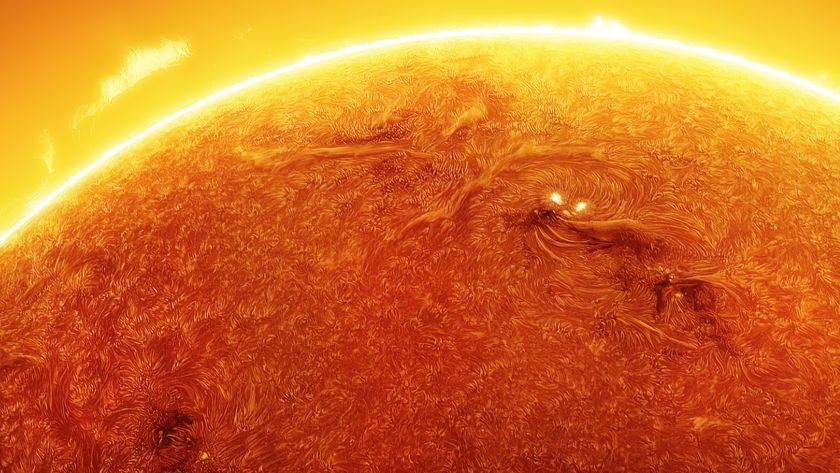The UK is sending robot submarines to watch the world’s largest iceberg crash into an island
The world’s largest iceberg appears days away from crashing into a penguin-filled island. These robots will study the aftermath.

The world's largest iceberg, A-68a, may be mere days away from crashing into the Antarctic wildlife refuge of South Georgia island, and researchers are already preparing for the aftermath. According to the British Antarctic Survey (BAS), which has tracked the iceberg for months, two refrigerator-sized robots will soon ship out for South Georgia to study the underwater effects of the impending collision.
The twin submersibles — each one measuring about 5 feet (1.5 meters) long and operated remotely — will spend almost four months collecting data on seawater temperature, salinity and clarity from opposite sides of the iceberg, according to a statement from BAS.
Scientists have known for some time that a direct hit from the 2,000-square-mile (5,100 square km) berg could block off marine feeding routes for millions of penguins and seals, potentially leading to mass animal starvation on the island. But there are other, more nebulous environmental impacts that can be studied only from the sea. For example, what happens when a trillion-ton iceberg starts releasing enormous amounts of freshwater into a thriving saltwater ecosystem?
Related: Images of melt: Earth's vanishing ice
"Animals and plants are … going to be faced with an instantaneous change in their environment," Geraint Tarling, an ecologist with BAS, said in a video included in the statement. "[Native plants] might not be able to grow as well, and that means there's not as much food available for zooplankton and krill, which are then the food for the penguins and seals. And so, the whole [ecosystem] might stop thriving."

The robots will help Tarling and his colleagues monitor those changes as they're happening, and hopefully allow them to predict long-term changes to the island's ecosystem.
Iceberg A-68a broke off of Antarctica's Larsen C Ice Shelf in July 2017, and has been steadily drifting north into warmer waters ever since. Recent aerial footage from the U.K.'s Royal Air Force (RAF) revealed that the berg is losing huge ice chunks (called "growlers") around its edges, and is streaked with deep cracks and caves. Whether the doomed iceberg breaks apart before grinding to a halt at South Georgia remains to be seen.
Sign up for the Live Science daily newsletter now
Get the world’s most fascinating discoveries delivered straight to your inbox.
Originally published on Live Science.

Brandon is the space/physics editor at Live Science. His writing has appeared in The Washington Post, Reader's Digest, CBS.com, the Richard Dawkins Foundation website and other outlets. He holds a bachelor's degree in creative writing from the University of Arizona, with minors in journalism and media arts. He enjoys writing most about space, geoscience and the mysteries of the universe.











